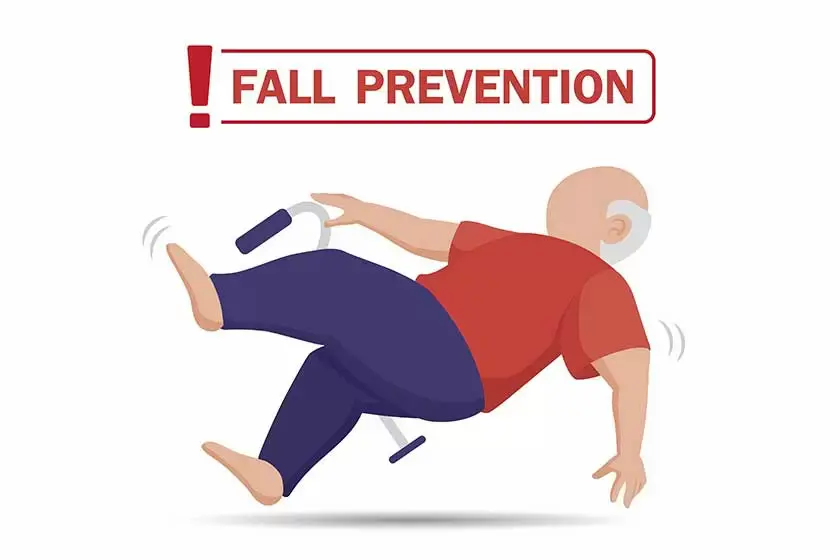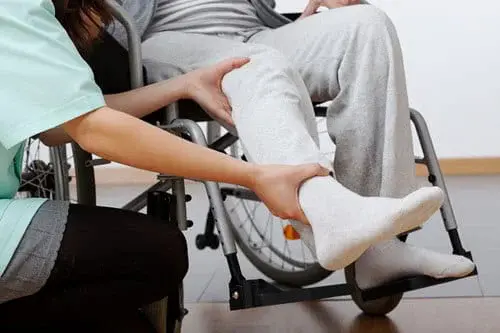Fall Prevention and the Dangers of Falls

Falls are a leading cause of injury, especially among older adults. They can lead to broken bones, head injuries, and reduced quality of life. However, most falls are preventable with proper precautions. This article explores the dangers of falls and offers practical fall prevention tips for individuals, caregivers, and healthcare providers.
Why Are Falls So Dangerous?
Falls are a common and serious threat, particularly for older adults and individuals with mobility issues. According to the World Health Organization, falls are the second leading cause of accidental injury deaths globally. Among older adults, falls can lead to:
Fractures: The most common fractures caused by falls are in the wrist, arm, ankle, and hip. Hip fractures are particularly concerning due to their severity and the impact on mobility.
Head Injuries: Falls can cause traumatic brain injuries (TBI), which can be life-threatening. Even minor head injuries can have long-term effects, especially for older individuals on blood thinners.
Loss of Independence: A fall can result in fear of falling again, leading to reduced physical activity. This inactivity can cause muscle weakness, reduced balance, and further risk of falling. The loss of confidence may also increase dependence on others for daily tasks, impacting mental health and social connections.
Medical Complications: Injuries from falls can lead to prolonged hospital stays and the risk of complications such as infections, deep vein thrombosis, and pneumonia.
Risk Factors for Falls
Understanding the factors that increase the risk of falls is key to prevention. Common risk factors include:
- Age: As people age, their balance, strength, and coordination tend to decline, increasing fall risk.
- Chronic Conditions: Conditions such as arthritis, Parkinson’s disease, and diabetes can affect mobility and balance.
- Medications: Certain medications, particularly sedatives, antidepressants, and blood pressure drugs, can cause dizziness, drowsiness, or lower blood pressure, leading to falls.
- Vision and Hearing Impairment: Poor vision and hearing can make it harder to avoid obstacles or react quickly to potential hazards.
- Environmental Hazards: Poor lighting, clutter, slippery floors, and uneven surfaces at home or outdoors can increase the likelihood of falls.
Fall Prevention Strategies
The good news is that falls can often be prevented with a combination of lifestyle adjustments, environmental modifications, and awareness. Here are some key strategies to reduce the risk of falls:
Exercise Regularly
Regular physical activity is one of the most effective ways to improve strength, balance, and coordination. Exercises such as walking, tai chi, and strength training can build muscle and improve stability. Physical therapists can also recommend targeted exercises to address individual weaknesses.
Review Medications
It's important to have a healthcare provider review medications regularly, especially if you're experiencing dizziness or balance issues. Some medications may need to be adjusted to reduce side effects that increase fall risk.
Make the Home Safer
Simple modifications can make the home environment safer:
- Install grab bars in bathrooms and along staircases.
- Ensure there is adequate lighting in all rooms and along hallways.
- Remove clutter and trip hazards like loose rugs or electrical cords.
- Use non-slip mats in the bathroom and kitchen.
- Consider rearranging furniture to create clear walking paths.
Get Regular Health Checkups
Routine health checkups are essential to manage chronic conditions that contribute to fall risk. Vision and hearing should also be regularly checked, as impairments in these senses increase the likelihood of accidents.
Wear Proper Footwear
Wearing supportive, non-slip shoes can significantly reduce the risk of falls. Avoid walking around the house in socks or slippery footwear, and ensure shoes fit properly to provide adequate balance support.
Use Assistive Devices
For individuals with mobility or balance issues, using canes, walkers, or other assistive devices can provide the extra stability needed to prevent falls. It’s important to ensure these devices are properly adjusted and used correctly.
Stay Hydrated and Nourished
Dehydration and malnutrition can lead to dizziness and muscle weakness, making falls more likely. A balanced diet and sufficient hydration are essential, particularly for older adults.
Fall-Proof Your Outdoor Spaces
Outdoor falls are also common, especially during icy or wet conditions. Make sure outdoor steps and walkways are well-lit and clear of debris. In colder climates, ensure walkways are salted or cleared of ice and snow to prevent slipping.
 Emergency Response: What to Do After a Fall
Emergency Response: What to Do After a Fall
Even with preventive measures, falls can still happen. Knowing how to respond in the event of a fall is crucial to minimizing injury:
1. Stay Calm: If you’ve fallen, try to remain calm and assess the situation before attempting to get up.
2. Check for Injuries: Before moving, check for pain or injuries. If you suspect a serious injury, such as a broken bone or head injury, avoid moving and call for help.
3. Use Stable Furniture to Get Up: If you’re able to get up, roll onto your side, and use sturdy furniture to support yourself as you slowly rise.
4. Call for Assistance: If you’re unable to get up, call for help using a phone or medical alert device.
Falls are a significant health concern, but they don’t have to be an inevitable part of aging. By addressing fall risks and taking preventive measures, individuals can maintain their independence and reduce the likelihood of injury. Whether through regular exercise, home modifications, or medication review, proactive steps can make a substantial difference in fall prevention.
Stay mindful, stay active, and create a safe environment to keep falls at bay and maintain a higher quality of life.


 Emergency Response: What to Do After a Fall
Emergency Response: What to Do After a Fall